USAID-NREL Partnership Newsletter – Summer 2021
Read our Summer 2021 issue for updates on our country activities, events, global technical platforms, and resources.
The USAID-NREL Partnership addresses critical challenges to scaling up advanced energy systems through global tools and technical assistance, including the Renewable Energy Data Explorer, Greening the Grid, the International Jobs and Economic Development Impacts tool, and the Resilient Energy Platform.
Featured News
NREL's USAID Programs Overcome Travel Restrictions To Provide Global Trainings
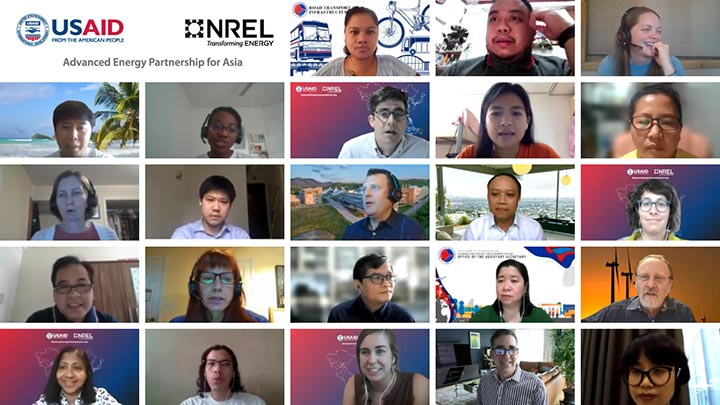
NREL researchers often traveled to places such as Thailand, India, or Colombia to meet with partners and host in-person workshops focused on cutting-edge practices and techniques. But when travel came to an abrupt halt because of COVID-19 lockdown measures, the NREL team leading projects under the USAID-NREL Partnership quickly pivoted to ensure they could continue providing exceptional support to USAID partner countries all over the world.
Since that time, the USAID-NREL team has converted several high-impact, capacity-building programs into virtual formats, with over 120 total participants across more than 30 institutions trained—all while maintaining personal connection and technical quality from thousands of miles away. With each successive program that implements the virtual format, the team gathers new lessons about how to make the courses more engaging and how to execute them more efficiently. While everyone may be eager to begin traveling and seeing international partners face-to-face again, this new capability has opened the door to offering much more flexible and equitable training opportunities.
Read the full story about USAID and NREL's online training capabilities.
Foundations of Energy Storage Outlined in Decision Guide and Technology Primer
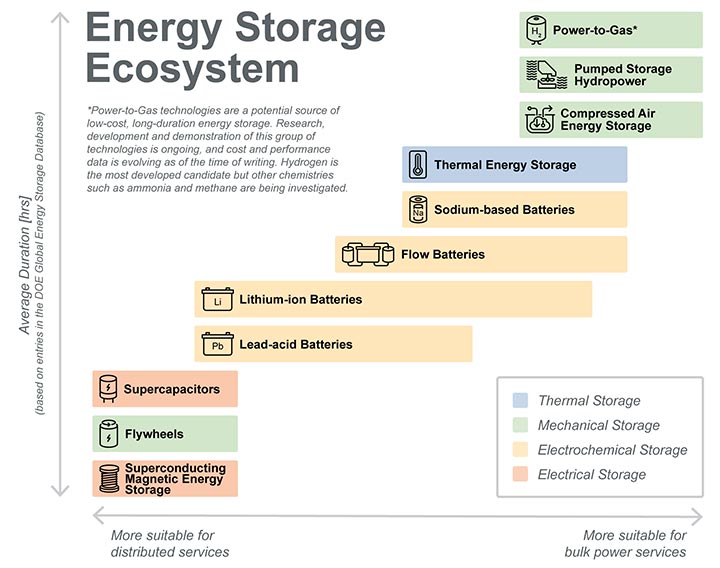
Driven by the increasing need for power system flexibility, as well as rapid declines in the cost of storage technologies, more utilities and governments are determining whether energy storage is an effective option for achieving their power system priorities including improving resilience, integrating variable renewable energy (e.g. solar PV and wind), and lowering operating costs.
To support policymakers with these complex and challenging choices, the Greening the Grid Energy Storage Toolkit released complementary resources designed to provide a foundational understanding about grid-connected energy storage that can inform policy, regulatory, and investment decisions. These resources outline important factors when comparing energy storage against other means for meeting power system objectives, as well as synopses of current and emerging energy storage technologies for grid-scale electricity sector applications.
Read the full reports:
USAID Energy Storage Decision Guide for Policymakers
USAID Grid-Scale Energy Storage Technologies Primer.
Learn more about these and other energy storage resources by visiting the Greening the Grid's Energy Storage Toolkit!
Advancing Energy Security and Climate Goals in South Africa Through Energy Efficiency
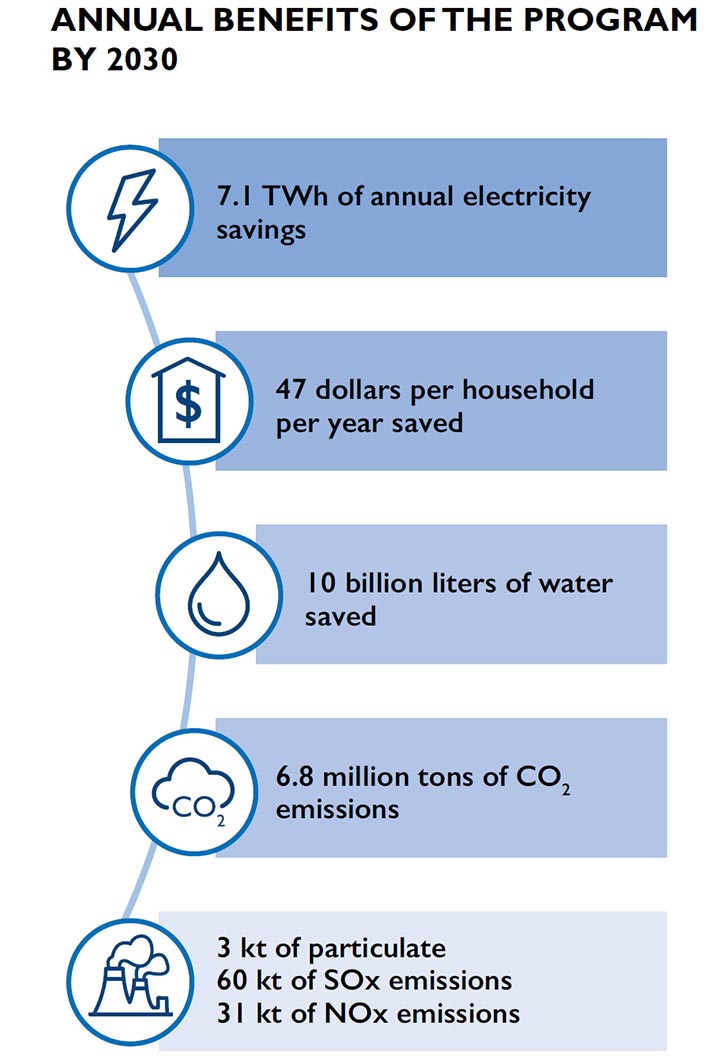
From our partners at the U.S. Department of Energy Lawrence Berkeley National Laboratory
Through the Energy Efficiency for Development initiative, USAID and Lawrence Berkeley National Laboratory, worked with South Africa's Department of Mineral Resources and Energy (DMRE) to assist in the implementation of an Energy Efficiency Standards and Labeling program to reduce electricity consumption and increase electricity reliability. This program aimed to address widespread blackouts that started in 2008 and to reduce CO2 emissions caused by South Africa's coal fired plants. While DMRE received a $4.4 million USD grant from the Global Environment Facility in 2011, the work was delayed due to a lack of experience and lack of reliable data and methods to assess potential energy savings.
To address these shortcomings, USAID assisted DMRE by using Lawrence Berkeley National Laboratory's International Database of Efficient Appliances tool to collect information on the efficiency of appliances sold in the South African market. The Energy Efficiency for Development team also provided training and technical assistance with the Demand Resource Energy Analysis Model tool to develop a South Africa specific tool that would estimate energy savings impacts of the Energy Efficiency Standards and Labeling program.
This collaboration led to new minimum energy performance standards, which were enacted in 2016 and included scheduled revisions in 2021 and 2023 for seven appliances. As a result, South Africa will reduce CO2 emissions by 6.8 million tons per year by 2030, saving the equivalent of the energy produced by a 1.2-gigawatt thermal power plant at one-fiftieth of the cost and will improve air quality by avoiding 3 million tons of particulate emissions.
Learn more about the South Africa project in Success Story: Energy Efficiency Standards and Labeling in South Africa.
Webinar Series Presents the Building Blocks of Cybersecurity
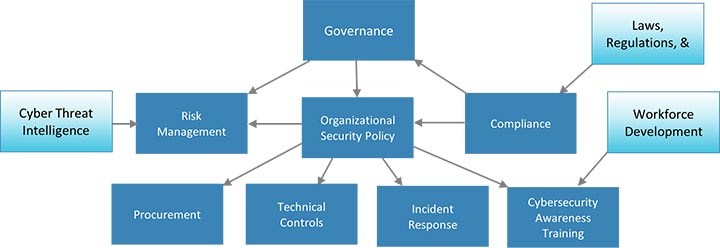
Making an electric utility cybersecure requires many different types of effort—hardening networks, preparing for future attacks, monitoring for new vulnerabilities, training staff to identify malware, and assessing which targets are most critical to continuity of operations.
An ongoing webinar series developed through the USAID-NREL Partnership's Resilient Energy Platform's Cybersecurity Resilience toolkit, in collaboration with the Caribbean Electric Utility Services Corp., breaks down these different cybersecurity efforts into user-friendly webinars presented by world-class experts. The goal of the "Power Sector Cybersecurity Building Blocks" webinar series is to raise awareness about all aspects of security and help utilities develop a well-rounded cybersecurity program.
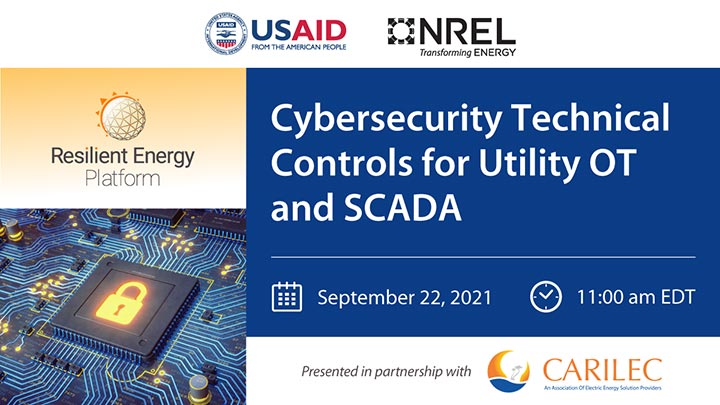
Register today for the upcoming webinar:
Cybersecurity Technical Controls for Utility Operational Technology and SCADA
Sept. 22, 2021, at 11 a.m. EDT
View Past Webinars in this Series:
Governance: A Building Block for Power Sector Cybersecurity
Building Blocks to Support Cybersecurity in the Power Sector
Cybersecurity and Distributed Energy Resources
Cybersecurity Awareness Training recording
Must Reads
Explore the diverse publications published by USAID and NREL.
Building Blocks of Electric Vehicle Deployment: A Guide for Developing Countries – August 2021 and May 2021
The USAID-NREL Partnership launched an online version of its report which was published in May 2021. This online guide walks decision makers step by step through key considerations for electrifying vehicles in their countries. The online version is available on the Greening the Grid's Electric Vehicle Toolkit.
Behind-The-Meter Battery Energy Storage: Frequently Asked Questions – August 2021
Behind-the-meter (BTM) battery energy storage systems (BESS) refers to customer-sited stationary storage systems that are connected to the distribution system on the customer's side of the utility's service meter. This fact sheet provides a brief overview of stationary BTM BESS and covers topics such as drivers for adoption, what services BTM BESS can provide to the power system, safety and location considerations, and which business models can best support BTM BESS deployment. This resource is provided by the Greening the Grid Energy Storage Toolkit.
Preparing Distribution Utilities for the Future – Unlocking Demand-Side Management Potential – July 2021
NREL, in collaboration with BSES Rajdhani Power Limited and USAID/India's Greening the Grid – Renewable Integration and Sustainable Energy program, examined the potential of demand side management in BSES Rajdhani Power Limited's service territory. The study developed modeling frameworks for load analysis and analysis tools to assess the potential of time-of-use tariffs in motivating consumers to reduce their peak period energy consumption.
Enabling Floating Solar Photovoltaic Deployment – Review of Barriers to FPV Deployment in Southeast Asia – June 2021
Floating photovoltaic (FPV) systems may play a significant role in renewable energy deployment in the Southeast Asia region, while providing additional economic, societal, and environmental benefits. This analysis details potential barriers to FPV deployment with a focus on economic, environmental, cultural, regulatory, and technical barriers and discussing best practices that may support FPV deployment.
Battery Storage for Resilience – June 2021
A growing number of institutions are deploying battery storage systems as a resilient energy solution because traditional backup power solutions, like diesel generators, are not always sufficient, especially during longer-duration and larger-scale disasters. This fact sheet, produced through the Resilient Energy Platform, describes how battery storage, along with additional generation sources, can be used both to provide cost savings while grid-connected and to provide backup power when the grid goes down.
Watch and Learn
Full Archive: The Asia EDGE Power Sector Learning Series
The Future of E-Mobility in Asia: Goals, Challenges, and Holistic Solutions
Upcoming Events
I-JEDI and a Global Green Recovery
Sept. 22, 2021 – 12–1:15 p.m. (EDT) | 6–7:15 p.m. (SAST)
The International Jobs and Economic Development Impacts (I-JEDI) model is a freely
available tool that estimates gross economic impacts from wind, solar, biopower, and
geothermal energy projects around the world. This webinar will cover opportunities
for the I-JEDI model to assist countries in assessing job and economic impacts of
clean energy options to support green economic recovery. It will also include a demonstration
of I-JEDI for potential users and a panel about the tool's applications in South Africa.
Register.
Subscribe to our Newsletter
To stay up to date with the latest news, updates, and events from the USAID-NREL Partnership, subscribe to our quarterly newsletter.
Share


